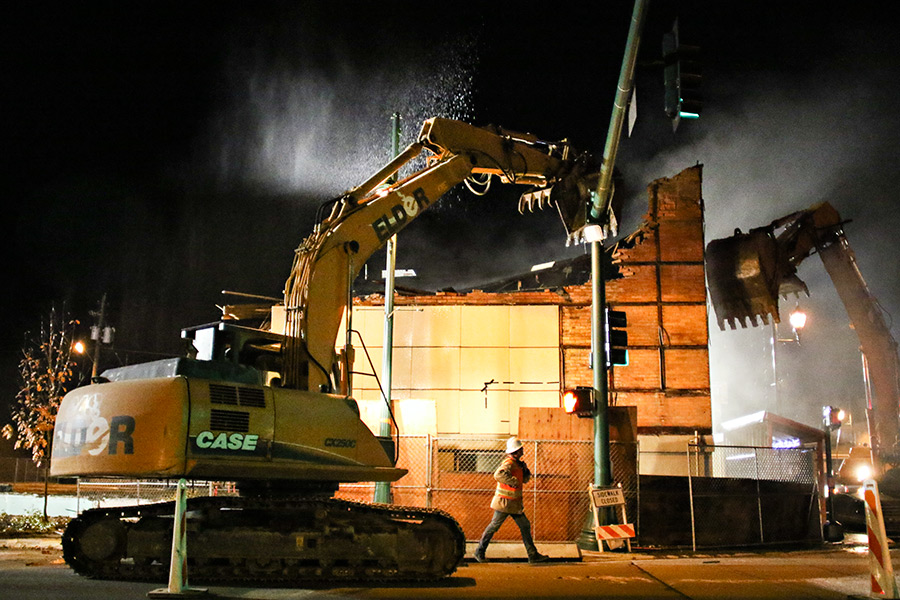Facing significant cost overruns as construction of the new city hall and parking structure moves forward, Whitefish officials entered the New Year grappling with a familiar problem – how to pare back expenses and reduce the $1 million budget gap that the high-ticket project has incurred.
At the Whitefish City Council’s regular meeting on Jan. 4, which begins at 7 p.m., Mike Cronquist, the city’s representative overseeing the construction, is scheduled to present an update on the project at the northeast corner of Baker Avenue and Second Street in downtown.
The council is scheduled to then discuss and review an updated budget spreadsheet for the project and consider other cost-saving measures and funding sources.
In a report to council, City Manager Chuck Stearns explained that officials have already trimmed the $1 million budget gap down to $882,699, with an additional savings of $162,000 available by capitalizing three years of lease revenue from the structure’s retail space, as well as borrowing funds from the Tax Increment Fund, which the city would repay over the course of three years.
“While this amount would reduce the gap to $720,699, it is still a project budget increase over the heretofore approved budget limit of $14,952,636,” Stearns wrote in his report.
“Please bear in mind that this figure can and will continue to change and go up or down,” he added.
Stearns also encouraged the council to “please remember that this City Hall and Parking structure is a large and complex project,” and solicited other suggestions for cost-saving options.
The total cost overrun from the budget is 5.9 percent, “a figure which might not be as alarming or concerning to the media and public,” he wrote.
“A cost overrun of 5 percent to 6 percent, while unfortunate, is not the crisis that some of the media or public have made it out to be,” Stearns continued.
The city hall portion of the project remains in line with historic cost projections, but the continued design of the parking structure has led to heightened expenses.
Still, Stearns said the parking structure and retail space is an “economic development project of the highest priority,” and an appropriate use of Tax Increment Funds.
Stearns said a number of factors have led to the increased costs, including the exterior of the parking structure, a third elevator and increasing construction costs for steel, concrete and labor.
The council is also slated to discuss other cost-saving measures, including eliminating new furniture purchases, reducing the amount of owners’ representative hours, delaying proposed improvements to Depot Park, allocating between $80,000 and $150,000 of resort tax revenues for downtown Central Avenue projects like sidewalks, street lights and street furniture, and finding additional value engineering savings.
All costs of the project are paid from the accumulated savings of the TIF district and current year TIF appropriation, as well as a future Tax Increment Bond, and $750,000 from the approved $880,000 Special Improvement District #167.
